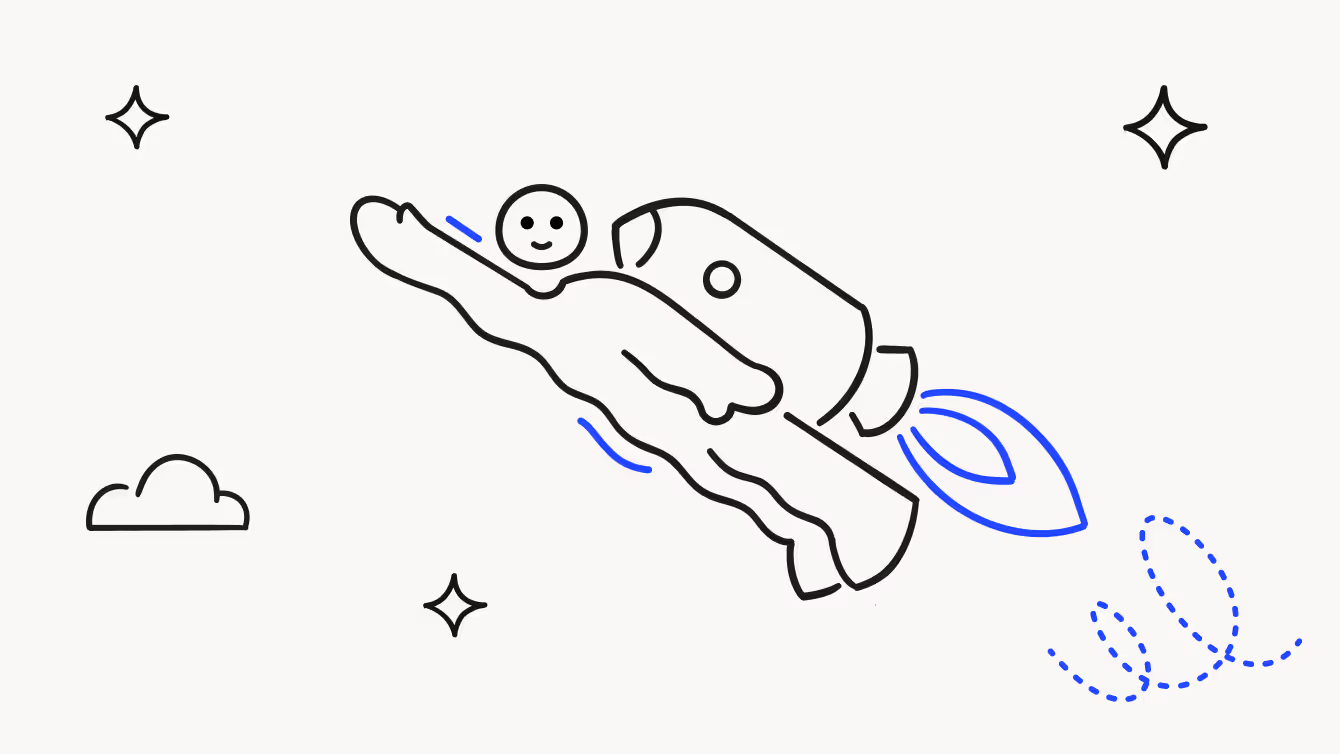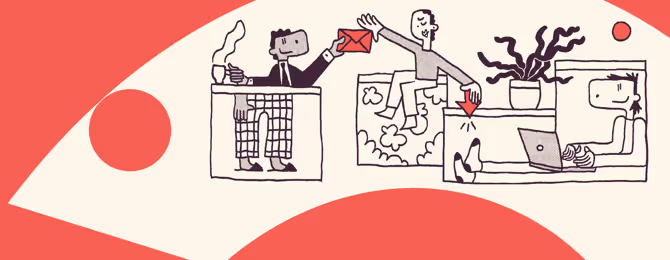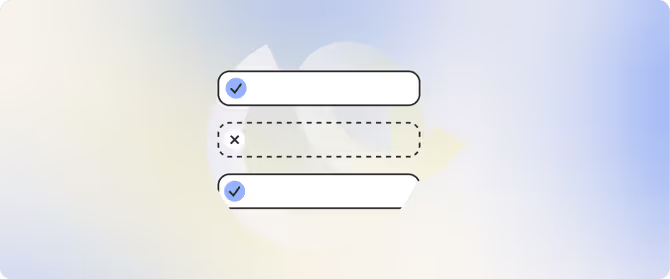Human Resources and AI: What HR leaders need to know
.png)
LEAD WITH CONFIDENCE
Streamline processes with our HR templates

AI has the power to revolutionize how companies hire, manage, and support their talent. But you’ll only see these benefits if you go about implementing it the right way.
If you find all the news about how Human Resources and artificial intelligence are reshaping the corporate world confusing, don’t worry. In this article, we break down the different types of AI, the top AI-powered tools, and predictions for the future of the HR space.
AI in Human Resources: Definition and types
In an HR context, AI uses algorithms and data-driven systems to improve how teams work. Unlike traditional HR software, which mainly digitizes processes, employees can use AI to analyze data, make predictions, and support decision-making.
As the technological landscape develops, HR teams are expected to deliver tailored experiences, reduce bias, and offer teams time for strategic work, all while handling an ever-growing mountain of employee data. AI HR tools can be the catalyst that turns these impossible expectations into easily handled tasks.
Generative AI
Generative AI is a subset of AI that creates new content, such as text, images, or video, from large datasets. Many HR professionals have begun using it to help analyze and distill information down into more easily digestible formats. But many teams make the mistake of relying solely on generative AI for things like role descriptions and job posts. To do so can leave them looking phony and lacking the company’s unique voice, potentially alienating the best candidates.
Conversational AI
Conversational AI simulates human conversations through either text or audio. Considering the use of AI in HR management now includes answering everyday questions on topics like benefits, policies, or paid time off (PTO) without adding to support backlogs, conversational AI can help. Current employees get quick, accurate answers to their queries, and candidates breeze through applications without confusion.
AI voice technology
Virtual assistants use AI voice technology to provide personalized, 24/7 support access and escalate conversations to a real person when needed. Voice tools let employees take action by speaking, not clicking through menus.
Machine learning (ML)
An ML model is a system that’s fed data by data engineers or automated programs. Using an algorithm, the system learns from that data and can then identify patterns and make predictions. Within HR, ML models are trained to spot patterns in hiring, performance, and retention data that humans might miss. Companies can use them to predict which employees will thrive and where turnover might spike.
Natural language processing (NLP)
NLP is a field of AI that allows computers to read, understand, and generate human language. An example HR use is to process survey responses and internal messages. The NLP model will process the text, highlight employee sentiment, and help you take proactive steps to address issues.
AI agents
AI agents are automated tools designed to handle end-to-end workflows with little human intervention. HR teams can use AI agents to automate simple and time-consuming administrative tasks, such as resume screening, benefits applications, or payroll.
Without having to deal with the busywork, HR managers can spend more time focusing on high-level initiatives like engagement and retention. But it’s important to remember that these AI agents are dealing with sensitive employee data. There must be sufficient oversight. Data should be anonymized and encrypted if possible. HR should also still guide the process and make any final calls.
4 benefits of AI in HR
HR is one of the busiest departments in modern businesses. AI has the potential to streamline simple tasks, free up resources, and save time. Here are four of the most notable benefits.
Enhanced efficiency
One of the quickest ways to reduce manual workloads is to let AI work its magic. Companies can delegate repetitive tasks like data entry and initial candidate screening to an AI agent. This will free up more of HR professionals’ time to focus on tasks that bring value to the organization.
Organized onboarding
Using AI-powered predictive analytics, HR teams can personalize onboarding experiences and welcome new hires without hassle. For example, AI tools can respond to new hires’ questions about the company, analyze employee data to create bespoke learning paths, and match well-suited mentors to junior employees.
Cost savings
AI’s efficiency savings can reduce the cost of many HR activities. For example, by automating time-consuming recruitment tasks like resume screening, AI can lessen the cost-per-hire of sourcing new employees.
Although only 23% of executives in a recent McKinsey report said they saw notable savings after AI integration, most were still hopeful about AI’s potential to cut costs in the coming years.
Data-driven decisions
Data is powerful, but only when it’s cleaned up and put to work. AI helps HR cut through the clutter by surfacing trends, predicting risks, and guiding decisions with confidence.
Challenges of implementing AI in HR
Even the best AI tools come with real considerations HR can’t overlook. You should think about these points before adopting AI.
Data privacy
HR teams handle sensitive information that must be protected and used responsibly. You can mitigate risks by enforcing strict data governance, using trusted vendors with strong security certifications, and being transparent with employees about how you plan to use their data.
Adoption resistance
Adoption resistance can really slow down progress. It often comes from employees and managers not trusting AI recommendations or worrying that the technology is replacing their roles. By providing clear employee training and showing real use-case wins, you can position AI as support, not replacement.
How to use AI in HR management
AI is a powerful tool that you can use in a whole host of different ways. Here are a few ways it can help HR teams.
Talent acquisition and hiring
HR teams can use AI to source candidates faster. AI tools can screen resumes for required skills and predict job fit using real performance data. This means less time sorting and more time interviewing the right people.
One example of AI in HR is automatic interview scheduling. Rather than making you send dozens of emails back and forth, AI can easily assign candidates the best slot for their meeting.
Employee onboarding and offboarding
AI-driven employee onboarding tools deliver personalized learning paths, highlight key resources, and ensure new hires complete every step on time. The same tech supports offboarding requirements such as asset returns, final pay, and knowledge handoff without the checklist scramble.
HR chatbots and virtual support
Answering employees’ questions tends to take up a lot of HR’s time. Chatbots can handle many of the most common queries, and unlike humans, they’re accessible 24/7. Employees get answers when they need them, and HR only steps in when a human touch is required.
Employee learning and development
AI can identify skills gaps and generate personalized learning paths so employees continue to grow as professionals. Platforms like Workleap Officevibe use AI-powered insights to guide managers with actionable development recommendations.
3 top AI tools in HR and common uses
Here are three of the top AI tools for today’s HR teams.
Workleap
Workleap is an AI-powered employee experience platform that integrates engagement, performance, onboarding, and compensation tools into one system. It offers HR teams real-time insights and simplifies processes like continuous feedback and compensation reviews.
How HR teams can use it: Using Workleap, HR teams can monitor engagement via pulse surveys, track performance in a unified dashboard, and automate onboarding flows for new hires. The platform not only helps leaders gather valuable employee data but also empowers them to act on it.
IBM Watson
IBM Watson, also called IBM watsonx Orchestrate, is a generative AI solution. It uses ready-built workflows for things like compensation checks, absence tracking, and employee support.
How HR teams can use it: HR departments can use IBM Watson to automate high-volume tasks like time-off approvals, freeing staff up for more strategic work. It also features “virtual agent” chatbots that can interact with employees and managers to answer their questions.
HireVue
HireVue is a video-interviewing and AI-powered assessment platform built for hiring at scale. It offers on-demand and live video interviewing, AI-driven candidate assessments, structured interview guides, and candidate engagement tools.
How HR teams can use it: HireVue can streamline hiring workflows. HR teams can use it to schedule interviews, assess candidate fit based on defined skills and attributes, conduct virtual job tryouts, and analyze candidate data to reduce bias.
The future of AI in HR and how to prepare for AI adoption
From recruitment and onboarding to performance management, AI already touches every stage of the employee lifecycle. In the future, HR teams will likely manage a mix of human- and AI-driven workflows.
Strategic planning, data interpretation, and ethical oversight over AI processes will become core parts of the role. Operational tasks will increasingly lean on AI for speed and accuracy, and AI-driven career pathing and predictive workforce planning will become more common.
For HR professionals, this means developing key skills in an AI-enabled work environment, including:
- Business acumen: Professionals will need to understand organizational goals and translate AI insights into actionable strategies.
- Communication and interpersonal skills: HR teams will bridge the gap between human employees and AI-driven processes.
- Generative AI literacy: Everyone will need to know how to use AI effectively, responsibly, and creatively.
- Problem-solving: To make decisions that balance fairness with efficiency, HR managers will need to be able to interpret AI results.
Optimize talent management with Workleap AI
Most HR teams have similar goals when integrating AI into their workflows: Minimize the manual work needed for repetitive tasks while preserving human creativity, fairness, and transparency.
Workleap’s AI-powered tools help you boost employee engagement, workplace satisfaction, productivity, and more, all while focusing on what makes your company great. Workleap AI helps you analyze engagement trends, summarize feedback, and auto-generate content like employee development plans and pulse survey questions. Its smart recommendations make HR tasks simpler while fostering a more engaged workforce.
To see how Workleap can enhance your HR activities, request a demo today.
Eager to simplify the way you work and boost your employee experience?


%20(1).png)


.png)
.png)

.avif)






